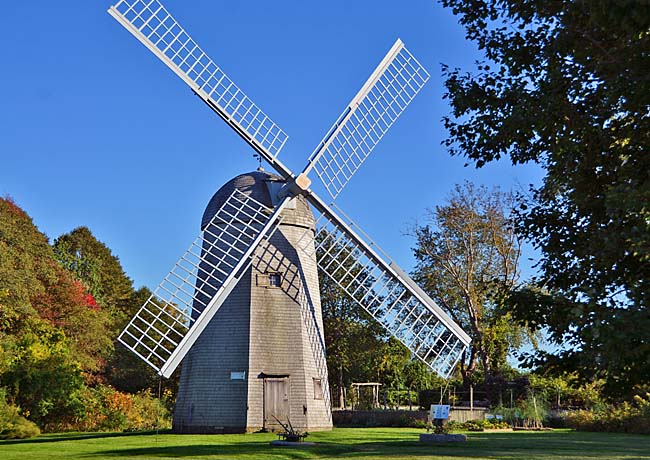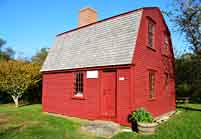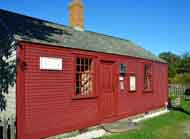|
Scenic USA - Rhode Island Sherman Windmill |

| Photos by Ben Prepelka Ben Prepelka Photography |
In reference to a red clay that lined the shore, early  17th century explorer Adriaen Block named America's smallest state Roodt Eylandt, meaning "red island" in the Dutch language. It was 20 years later when the first settlers arrived in today's Rhode Island. Banished from the Massachusetts Bay Colony, Roger Williams led his group across the Seekonk River into the territory of the Narragansetts. He called the settlement Providence. Although the red clay soil was weak, Indians taught Williams their agricultural techniques. Settlers were able to raise corn, tobacco, cattle and hogs.
17th century explorer Adriaen Block named America's smallest state Roodt Eylandt, meaning "red island" in the Dutch language. It was 20 years later when the first settlers arrived in today's Rhode Island. Banished from the Massachusetts Bay Colony, Roger Williams led his group across the Seekonk River into the territory of the Narragansetts. He called the settlement Providence. Although the red clay soil was weak, Indians taught Williams their agricultural techniques. Settlers were able to raise corn, tobacco, cattle and hogs.
Raked at least twice by glaciation, most of Rhode Island was left with deposits of rocks and glacial till. Where valleys collected glacial sediments and outwash, a group of mid 17th century merchants developed huge estate plantations on the western side of Narragansett Bay. Utilizing this rich pastureland, production of dairy, poultry, and other animal products turned Rhode Island a prosperous agricultural colony. While towns along the coast made their living by fishing, whaling, shipbuilding and shipping, the inland economy was based on timber products, the fur trade, livestock and distilled spirits.
A tribute to its Dutch ancestry, the Robert Sherman Windmill stands proudly along Middletown's Main Street, where its undressed sail panels reach skyward. The 30 foot tall
smock mill was built in Warren, Rhode Island, over 180 years ago.  Although it wasn't designed to be portable, the windmill was moved several times during its useful years, and had moved as far as Fall River, Massachusetts.
Although it wasn't designed to be portable, the windmill was moved several times during its useful years, and had moved as far as Fall River, Massachusetts.
A reminder of yesteryear's agrarian heritage, the Aquidneck Island windmill is on display at Prescott Farm. Open from dawn to dusk, the farm preserves 40 acres of open space. During the 1970s, Doris Duke relocated several historic buildings to the property, including the Hicks house, Nichols–Overing house, and, of course, the impressive windmill. The farm has received several grants to enhance its appearance and to promote the understanding of 19th century farm life in Rhode Island. The Lowe's Charitable and Educational Foundation and the
Historical Preservation and Heritage Commission have been noteworthy contributors.
Area Map

|
Nearby Points of Interest |
Scenic USA Prints from
|
Copyright © 2022 Benjamin Prepelka
All Rights Reserved

